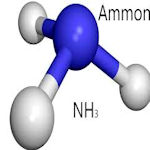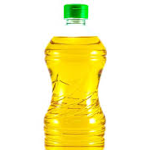Canola Oil – The Healthy Oil
By Dr. Keith Downey
Award-winning agricultural scientist
Preface by Dr. Maxwell Nartey
Researchers who have not used chromatography to analyze the different oils and compared their data, wrote and published all kinds of articles maligning canola oil just to give olive oil the marketing advantage. Some have even opined that canola oil causes cancer and tumors. Unfortunately, those who read their articles on the Internet and avoided canola oil, have fallen prey to their scams. Now, they are among the sickest in this world.
Symptometry developed a simple viscosity test by using the freezer, as its test site. This simple test enables any health-conscious individual to determine if the cooking oil is good or bad before using it.
After seven hours of exposure in a locked freezer, canola emerged as the best of all cooking oils because it retained its fluidity. Olive oil, coconut oil, safflower oil, rapeseed oil, palm oil, soy oil, and corn oil caked solid. A lipid’s loss of fluidity in extreme cold, makes it less resistant to extreme heat.
Also, if a lipid that is less resistant to extreme heat is used for cooking, its lipid peroxides will be more violent in the cardiovascular system than a lipid whose lipid peroxides are less violent. This explains why people who eat food that was cooked with an oil other than canola oil, are more likely to have a stroke, hyperlipidemia, dementia, Alzheimer’s disease, amnesia, internal hemorrhaging, aneurysm, and calcification in the arteries and breasts.
Excellent scientists are required to be impartial. They must only deal with data, and comment on data. Opinions and biases have no place in a scientific discourse. The following is an extract from Dr. Keith Downey’s article that was published by the Saskatchewan Canola Development Corporation. It was titled Canola – the healthy oil.
“Canola oil is heart healthy, versatile and affordable. It’s healthy fat profile, neutral taste, light texture, and high heat tolerance make it a culinary superstar – from salad dressings, sauces, and marinades to baking, grilling, sautéing and deep-frying.
What is Canola?
- Canola is a plant – a member of a large family called crucifers. Included in the Brassica family, canola is related to kale, cabbage, broccoli, Brussels sprouts and mustard. Crucifers are easy to identify as their four yellow flower petals form the shape of a cross.
- Canola grows to a height of one to two meters and is ready to harvest in about 3 ½ months – depending on temperature, moisture, sunlight, and soil fertility. It is a cool season crop and grows particularly well on the Canadian prairies, where hot days and cool nights allow it to develop its unique fatty acid profile.
- The yellow flowers produce narrow seed pods about 5 cm in length. There is an average of 60 to 100 pods per plant. Each seed pod contains from 20 to 30 tiny round seeds, about 1 mm in diameter.
- After harvesting, the seeds are crushed to release the canola oil. Each seed contains about 45% oil – double that of soybeans.
- Canada – primarily the prairie provinces of Saskatchewan, Alberta, and Manitoba – is the world’s top exporter of canola and one of its top producers.
- Canola oil is used all over the world. It is the number one cooking oil used in Canada and Japan, and the number two oil in the United States and Mexico. Overall, it is the third most consumed oil in the world.
- Although they look similar, canola and rapeseed plants are very different. Canadian researchers used traditional plant breeding to eliminate the undesirable components of rapeseed and created a new plant called ‘canola’.
- Did you know that the name canola comes from two words – Canada and ola (oil)? It is a true ‘Made in Canada’ innovation!
Canola Oil is a Heart Smart Choice
Canola oil is heart healthy and is recognized as being heart smart by many health organizations. It has the least amount of saturated fat of any common cooking oil and contains less than half the saturated fat of olive or soybean oil. Canola oil also has the most omega-3 fat of any cooking oil and is a good source of vitamin E just like wheat germ oil.
Canola oil is:
- Free of trans fat and bad cholesterol. Trans fat increases the risk of heart disease in two ways: it raises LDL and it lowers HDL.
- Low in saturated fat. Saturated fat has also been linked to increased risk of heart disease by increasing LDL.
- High in monounsaturated fat. Monounsaturated fat may help reduce the risk of heart disease by lowering LDL and controlling blood sugar.
- High in omega-3 fat. Alpha-linolenic acid (omega-3) must be consumed because the body cannot make it on its own. Omega-3 fat is anti-inflammatory and may help protect against heart attacks and strokes.
- A source of omega-6 fat. Linoleic acid (omega-6) is also essential in the diet because the body cannot produce it. Omega-6 fat is essential for human growth and development as well as for skin health.”
A side note from Symptometry that is worth mentioning is, the canola plant is the hybrid of mustard seed and rapeseed. This man-made hybrid produces low erucic acid. A good cooking oil is measured by its extremely low saturated fat content and its high omega 3 (alpha-linolenic acid) content.
Canola oil and safflower oil have only 7% of saturated fat compared to olive oil which has 16%, soy 15%, and corn oil 17%. Regarding omega 3, canola oil has 7%, olive oil has 0%, corn oil has 0% and safflower oil has 0%.
Even though safflower and canola oil are in a statistical tie as far as saturated fat is concerned, canola oil affirms its superiority in the omega 3 column. This is why of all the cooking oils in the world, canola oil emerges as the best. Here is a man-made oil that is superbly monounsaturated and highly resistant to the damaging effects of heat and light. This means if nature cannot provide us with what is good for our cardiovascular system, humans can use their ingenuity to make things better for the human race.
Also, it is the combination of low erucic acid and the high percentage of omega 3 that makes canola oil extremely resistant to hexane during the canola oil extraction process.
Hexane is a carcinogen, but brilliant scientists were able to produce a hybrid that makes it impossible for hexane to contaminate the monounsaturated lipid called canola oil. This is why even the scientists of the United States EPA (Environmental Protection Agency) had no other choice than to confirm the superiority of canola oil in the agency’s 1987 n-Hexane Health Advisory.
In 1993, the scientists of the US Department of Health and Human Services Hazardous Substances Data Bank, could not confirm that canola oil causes cancer and tumors. Their data analysis showed that all canola offered were, benefits.
Regrettably, the scientists who knew all about the benefits of low erucic acid and omega 3 in a lipid, intentionally sidestepped the scientific facts just to make people avoid canola oil.
Symptometry teaches that research should never be used to mislead, misinform and misdirect people. It should be used to inform and enlighten all of us so that planet Earth becomes a better place for all.
© Copyright 2021, The American School of Symptometry, NFP. No part of this publication may be reproduced or transmitted in any form or by any means, electronic or mechanical, including photocopying, recording, or by any information storage and retrieval system without the written permission of The American School of Symptometry, NFP. Library of Congress copyright number Txu 1-621-370, Washington D.C.

 Previous Post
Previous Post Next Post
Next Post

